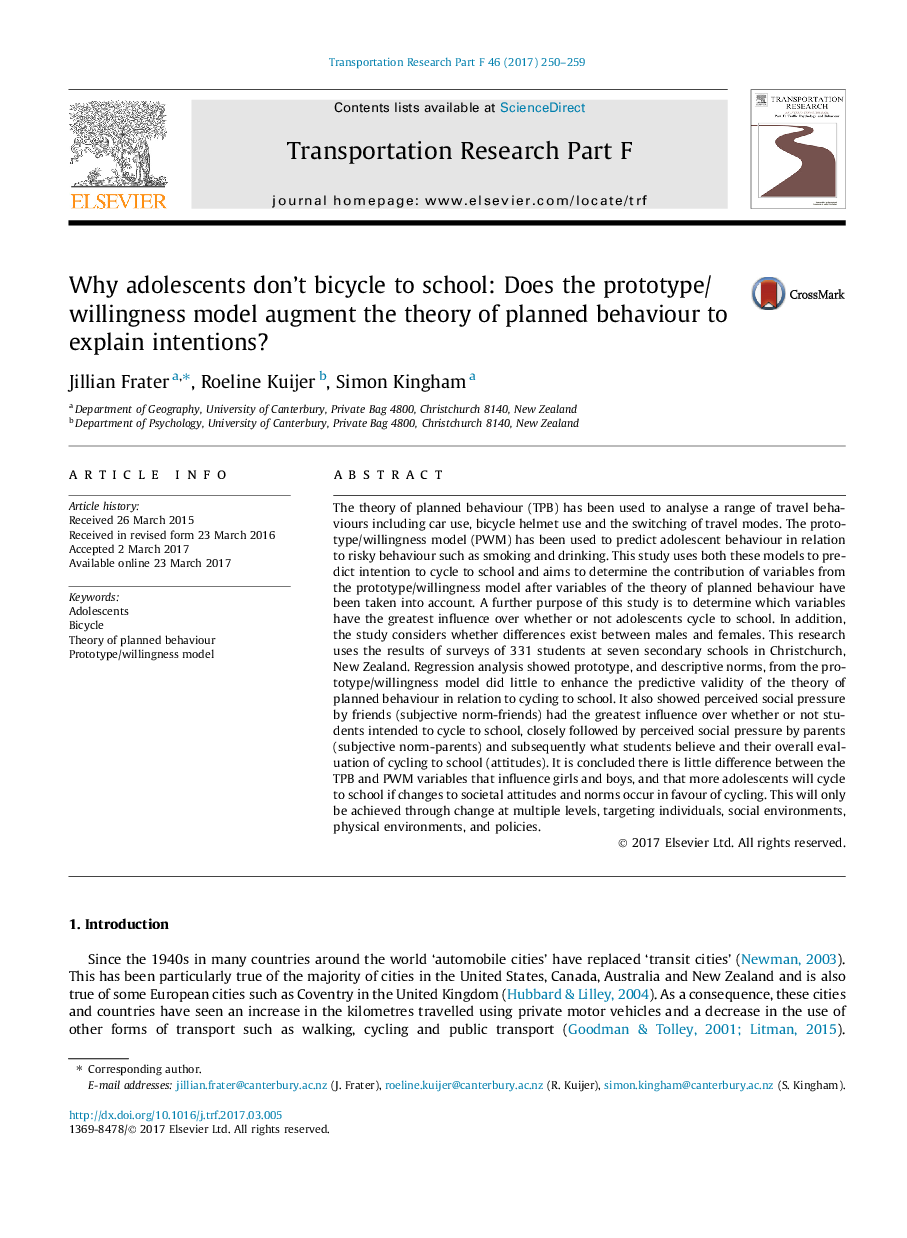| کد مقاله | کد نشریه | سال انتشار | مقاله انگلیسی | نسخه تمام متن |
|---|---|---|---|---|
| 5037445 | 1370222 | 2017 | 10 صفحه PDF | دانلود رایگان |
- Using the prototype/willingness model (PWM) to consider cycling to school.
- Perceived social pressure was the greatest influence on students' intentions.
- Social pressure from friends was more influential than that from parents.
- Students' attitudes, willingness and friends' behaviour were also influential.
- The PWMs enhancement of the predictive validity of the TPB for cycling to school.
The theory of planned behaviour (TPB) has been used to analyse a range of travel behaviours including car use, bicycle helmet use and the switching of travel modes. The prototype/willingness model (PWM) has been used to predict adolescent behaviour in relation to risky behaviour such as smoking and drinking. This study uses both these models to predict intention to cycle to school and aims to determine the contribution of variables from the prototype/willingness model after variables of the theory of planned behaviour have been taken into account. A further purpose of this study is to determine which variables have the greatest influence over whether or not adolescents cycle to school. In addition, the study considers whether differences exist between males and females. This research uses the results of surveys of 331 students at seven secondary schools in Christchurch, New Zealand. Regression analysis showed prototype, and descriptive norms, from the prototype/willingness model did little to enhance the predictive validity of the theory of planned behaviour in relation to cycling to school. It also showed perceived social pressure by friends (subjective norm-friends) had the greatest influence over whether or not students intended to cycle to school, closely followed by perceived social pressure by parents (subjective norm-parents) and subsequently what students believe and their overall evaluation of cycling to school (attitudes). It is concluded there is little difference between the TPB and PWM variables that influence girls and boys, and that more adolescents will cycle to school if changes to societal attitudes and norms occur in favour of cycling. This will only be achieved through change at multiple levels, targeting individuals, social environments, physical environments, and policies.
Journal: Transportation Research Part F: Traffic Psychology and Behaviour - Volume 46, Part A, April 2017, Pages 250-259
